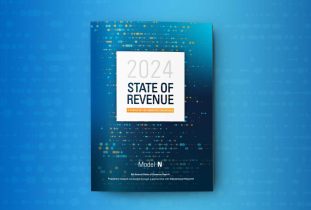Rebates programs are a common practice for pharma companies doing business in Europe. And the use of so-called clawbacks – already a fixture in the United Kingdom – could possibly spread to other EU countries or beyond. Poor management of rebate and clawback processing can lead to significant financial and regulatory headaches, but with the right approach, you can transform this challenge into a strategic superpower.
In this blog, we’ll take a closer look at the challenge of European pharma companies, lay out best practices for managing rebates and clawbacks effectively, and show how selecting a technology platform with the right capabilities can help you stay ahead of the curve.
Rebates and clawbacks growing in size and complexity
In Europe, pharmaceutical companies are subject to strict regulations governing the pricing and reimbursement of drugs. Failure to comply with these regulations can result in fines, penalties, and even legal action. One of the biggest challenges of dealing with these regulations is that they vary considerably from country to country. For example, Switzerland’s way of regulating pharmaceutical pricing differs from that of Spain, Italy, or Croatia.
One example of how complex – and costly – such regulations can be is found in Germany. The German system for regulating pricing and reimbursing pharmaceuticals is possibly one of the most complicated in the EU. Then, in 2022, the German government added even another layer of complexity to its existing rules when it passed the draft for the Act for the Financial Stabilization of the German Statutory Health Insurance System, called the Gesetzliche Krankenversicherung (GKV-FinStG).
For example, the German statutory health insurance system annually sends out tenders for generic medications. Whichever pharma firm wins the contract must pay a mandatory rebate of 10% back on sales to the GKV. This gives it exclusive access to the German market for that drug, with pharmacies required to only dispense “rebated generics” to patients. Then, yet another general mandatory discount applies to all medicines, currently at 7% of the company’s sales price.
With the new GKV-FinStG, this mandatory discount will increase to 12% for the fiscal year 2023. Thus, in addition to the specific discounts for generic drugs (10%) and mandatory discounts for combination therapies (20%), an additional 12% mandatory rebate will also apply.
If this sounds daunting, that’s because it is. Pharma companies are scrambling to run the numbers to decide whether to respond to the new tenders being issued by the GKV.
Still, it’s the clawbacks established by the British National Health System (NHS), called the Voluntary Scheme for Branded Medicines Pricing and Access (VPAS), that everyone is watching.
Under VPAS, there is an annual rebate, which suppliers of branded medicines – including branded generics and other medical products – must pay. The rebate aims to enable more innovation and better health outcomes and make medicine spending by the NHS more predictable through collaboration between government and industry. In the fiscal year 2022 (ended March 20, 2023), the clawback rate of 26.5% increased substantially compared to previous years. There is currently a proposal of 27.5 % for fiscal year 2023.
This means that more than one-fourth of all pharma revenues will be returned to the government. Managing this effectively will be critical to the financial health of pharma firms.
Challenges related to rebates and clawbacks
As you can see, the pricing of pharmaceuticals in Europe is highly complex. Because each country has its reimbursement system, pharma companies must navigate a complicated web of regulations and negotiate with multiple payers to cover their products. This intricacy makes it challenging for companies to determine the appropriate product price and calculate rebates accurately.
Here are some of the biggest challenges pharma firms face today in Europe.
Maintaining compliance
First, your clawback and rebate calculations can be audited at any time by various governments. Noncompliance could result in costly fines, reputational damage, and other negative fallout.
Yet rebates and clawbacks typically involve complex contracts between pharmaceutical companies and payers. Managing these contracts can be challenging, particularly when dealing with multiple payers across multiple countries. Therefore, companies must ensure that they have effective contract management processes to track contract terms, rebate amounts, and payment schedules.
Keeping financial reporting accurate
Forecasting, tracking, paying, and posting financial accruals for clawbacks and rebates are critical to your organization’s bottom line. Still, keeping accounting and other financial reporting straight is problematic, especially when there is uncertainty about the timing and amount of these payments. Therefore, companies must have effective financial accounting processes in place to accurately account for rebates and clawbacks, and to ensure that financial reports reflect the impact of these payments on the company’s overall financial performance.
Automating manual processes
The complexities of the rules and requirements of all the numerous regulations in various countries lead to time-consuming processes that are not easily repeatable or audit friendly.
Although many pharma firms have partially automated their rebate and clawback processing, only some have implemented end-to-end solutions. The manual processes still prevalent include pulling sales reports, manually manipulating the data to get the proper set of data for calculation, and utilizing spreadsheets to perform calculations based on the specific contract or government program. All this leads to wasted team time and errors that can put you in non-compliance, cause you to overpay or otherwise leave revenue on the table, or all the above.
Eliminating data silos
Rebates and clawbacks can involve large amounts of data, which must be tracked and analyzed to ensure that payments are accurate and timely. Unfortunately, much of the needed data must be extracted from different systems. Done manually, this can be an exceedingly time-consuming and error-prone process.
Best practices
Here are some best practices for pharmaceutical companies to follow when attempting to manage rebates and clawbacks in Europe:
- Develop a clear rebate and clawback strategy: Companies should have a clear rebate and clawback plan that aligns with their overall business objectives. This strategy should consider market competition, regulatory requirements, and payer expectations.
- Collect and cleanse data: Rebates and clawbacks involve large amounts of data that must be tracked and analyzed. Therefore, companies should invest in data management and analysis capabilities to ensure that they can accurately track rebate and clawback data, analyze this data to identify trends and opportunities for improvement and generate accurate reports.
- Calculate and review results: Effective contract management is critical for rebates and clawbacks. Companies should have clear contract terms that are negotiated and agreed upon with payers. They should also have processes in place to track contract terms, rebate amounts, and payment schedules.
- Issue payments and credits: Maintaining transparency with payers is critical to managing rebates and clawbacks effectively. Companies should be transparent with payers about their pricing policies and rebate programs and work with payers to resolve any disputes promptly and satisfactorily.
- Generate summaries and reports: Technology can be a powerful tool for managing rebates and clawbacks. Companies should consider using technology to streamline processes such as data management, contract management, and compliance management.
Selecting the right technology vendor
Indeed, technology can play a critical role in helping pharmaceutical companies manage rebates and clawbacks in Europe. Here are some key capabilities that a pharma company should consider when selecting a technology solution:
- Integration: Your solution should integrate with existing systems and processes, such as contract management systems, financial accounting systems, and data analytics tools. This will help you ensure that data is shared seamlessly across different functions and that processes are streamlined.
- Data management: By handling large amounts of data, a rebate management solution should be able to track and analyze data related to rebates and clawbacks. This will help companies identify trends and opportunities for improvement and ensure that payments are accurate and timely.
- Contract management: Robust contract management capabilities are critical. These should include the ability to manage complex contracts with multiple payers across multiple countries. This helps you track contract terms, rebate amounts, and payment schedules and ensure that payments are made on time and in accordance with contractual obligations.
- Compliance management: The technology solution should have effective compliance management capabilities, including the ability to monitor compliance with applicable regulations and identify and mitigate compliance risks. This will help companies avoid fines and penalties associated with non-compliance.
- Reporting: The capability to generate accurate and timely reports on rebate and clawback activity, including financial performance, payment schedules, and compliance issues, is also critical. This helps you monitor performance, identify areas for improvement, and make more informed business decisions.
Stay competitive in challenging European markets
By following these best practices and investing in a leading rebates management solution, like Model N, pharmaceutical companies can effectively manage rebates and clawbacks in Europe while maintaining profitability and remaining competitive in a highly regulated and competitive marketplace.
Discover more opportunities to strengthen your rebate programs by downloading our whitepaper.
















